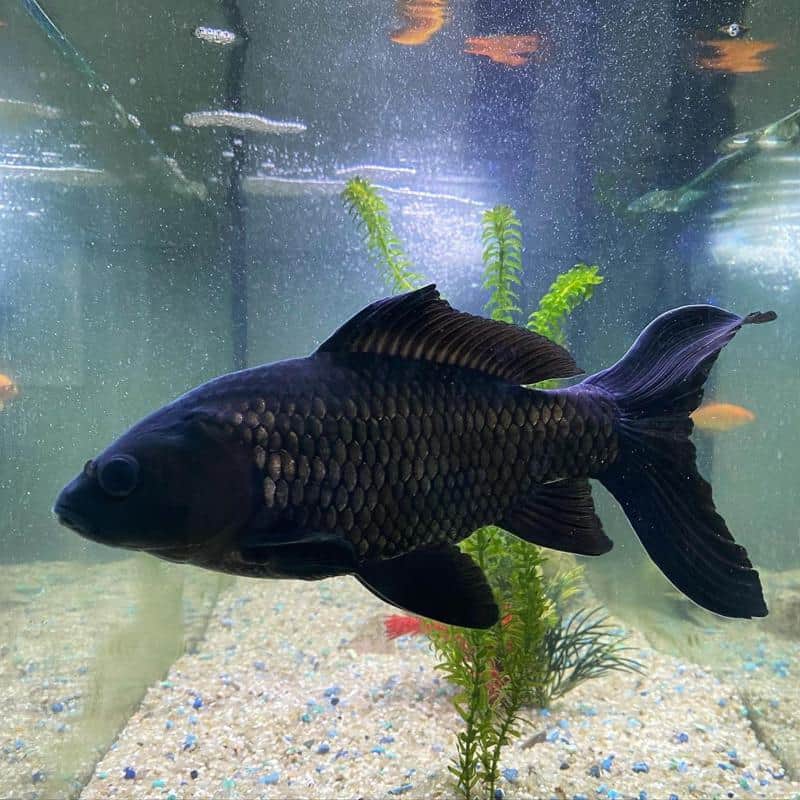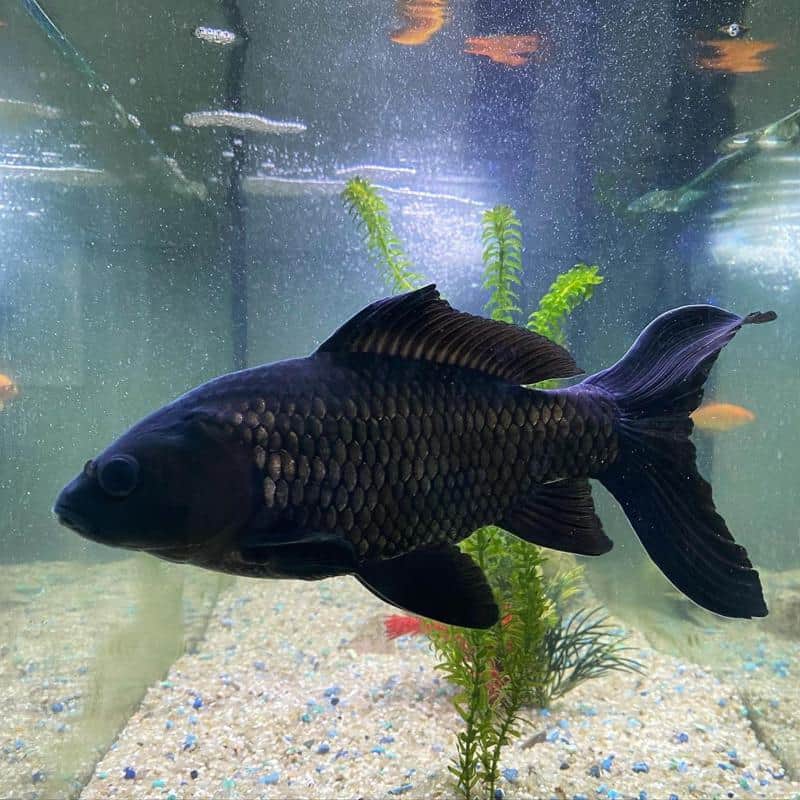Elevate Pet Supply
RED/BLACK COMETS
RED/BLACK COMETS
Couldn't load pickup availability
Red and black Comets are a striking variation of the Comet goldfish, known for their sleek, elongated bodies and flowing tails. Their deep red and black coloration creates a bold contrast, making them stand out beautifully in aquariums and ponds.
These fish are incredibly hardy and energetic, often darting around their environment with speed and grace. Their streamlined shape and long, flowing fins give them an elegant, almost koi-like appearance, though they remain smaller than true koi.
Key Traits:
- Coloration: A mix of vibrant red and deep black, sometimes marbled across their bodies.
- Size: Typically 10–12 inches in a spacious pond, slightly smaller in tanks.
- Temperament: Active, social, and compatible with other peaceful goldfish.
- Habitat: Best suited for well-filtered tanks or ponds with ample swimming space.
Red and black Comet goldfish require similar care to standard Comets, but their striking coloration makes them even more eye-catching. Here’s how to keep them thriving:
Habitat Setup
- Tank Size: Minimum 40–50 gallons per fish. They need ample swimming space.
- Water Conditions: Keep water between 65–70°F, pH 6.0–8.0, and hardness 5–19 dKH.
- Filtration: A strong filter is essential to manage waste and maintain water quality.
-
Substrate & Decor: Smooth gravel and hardy plants work best. Avoid sharp decorations that could damage their fins.
Feeding
- Frequency: Feed once or twice daily.
- Diet: High-quality dried food, bloodworms, small insects, larvae, and plant-based foods like peas, lettuce, and broccoli.
- Tip: Only feed what they can eat in 2–3 minutes to prevent water pollution.
Maintenance
- Water Changes: Replace 25–30% of the water weekly to keep toxins in check.
- Testing: Regularly test for ammonia, nitrites, nitrates, and pH.
- Observation: Watch for signs of illness like clamped fins, white spots, or sluggish behavior.
Companionship
- Tank Mates: Other peaceful, similarly sized goldfish are ideal. Avoid fin-nippers or aggressive species.
- Behavior: Comets are social and active—great for community setups if space allows.
Bonus Tip
If kept in a pond, ensure it’s deep enough (at least 2 feet) to prevent freezing solid in winter. They can overwinter outdoors if the pond is properly maintained.
Comet goldfish are hardy, but they can still suffer from common health issues, especially if their environment isn’t well-maintained. Here are some of the most frequent problems:
Common Health Issues
- Buoyancy Disorders – Goldfish can struggle with floating or sinking due to swim bladder issues, often caused by overfeeding or poor diet.
- Fin Rot – A bacterial infection that causes frayed, decaying fins. It’s usually linked to poor water quality.
- Ich (White Spot Disease) – A parasitic infection that appears as tiny white spots on the fish’s body and fins. It spreads quickly in tanks with fluctuating temperatures.
- Ulcers – Open sores on the body, often caused by bacterial infections or parasites.
- Fungal Infections – Cotton-like growths on the body or fins, usually appearing after an injury or stress.
- Dropsy – A severe condition where the fish’s body swells due to fluid retention, often caused by kidney failure or bacterial infections.
- Gill Disease – Difficulty breathing, often caused by poor water conditions or parasites.
Prevention & Care
- Maintain clean water with regular changes and filtration.
- Feed a balanced diet with high-quality pellets and occasional fresh veggies.
- Avoid overcrowding to reduce stress and disease spread.
- Observe behavior daily for early signs of illness.
If you notice any symptoms, early treatment is key!


